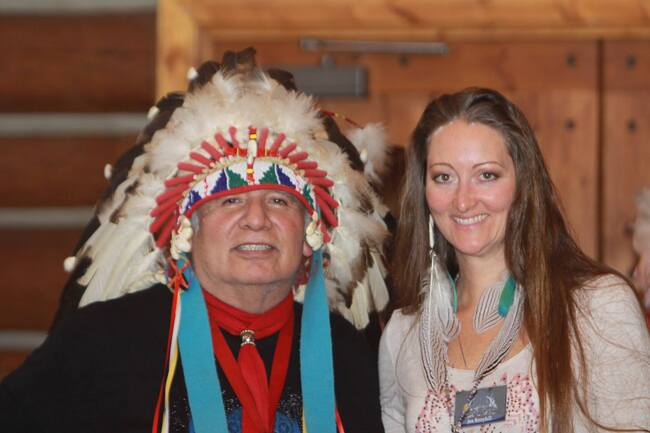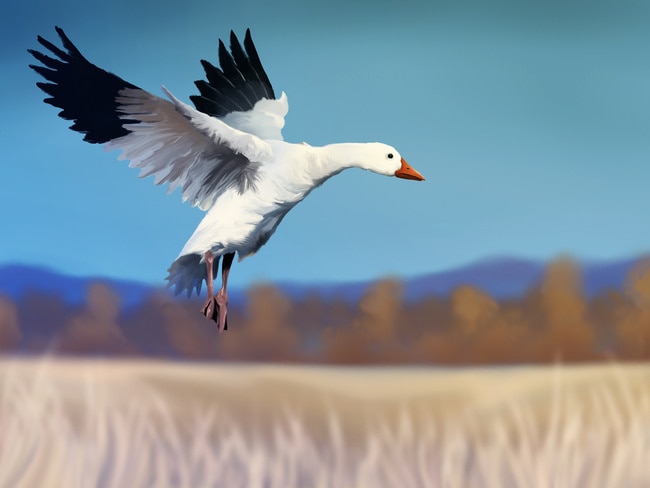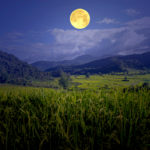6 Native American And Indigenous Winter Traditions

Native American and Indigenous Peoples honor the winter season by slowing down, visiting the mountains, and otherwise recognizing the interconnectedness of humanity, nature, and the stars above. The colder months are a time to become more conscious and to heal—individually and collectively, as a planet.
“We take care of Mother Earth, she will take care of us. It is our responsibility to make connections with the elements, with the Earth, the Moon, the Sun, and all the energies.”
-Verlinda Montoya, Medicine Woman
As we pull out our sweaters, the bear snuggles into his fur to hibernate. But what can we do to celebrate the change of the season? Below are 6 activities from Native American and Indigenous Peoples’ perspectives to inspire you. Great thanks to the many contributors who shared their knowledge to create this article.
1) Rest, Move Slowly, And Heal
Winter is a time to rest and restore. Curl up under cozy blankets, let go, and dream! Alice Caparelli, a descendant of medicine women from the rainforests of Brazil, suggests that we find a slow, rhythmic pace of movement in winter. Caparelli’s work is based on an alternative calendrical system called the “Law of Time.” In this system, the Moon closest to the winter solstice is called the Rhythm Moon (as opposed to the Cold Moon).
Indigenous wisdom says that human movement contributes to the flow of nature and affects the health of Mother Earth. By allowing yourself to rest and repair, you are participating in a large-scale healing of the planet.
2) Recognize The North Direction
For the Indigenous Peoples of North America, each season is associated with a cardinal direction (North, South, East, or West). The winter months of December and January are associated with the North. This direction symbolizes purity, renewal, and your ancestors. Verlinda Montoya, of the Lakota and Picuris tribes, says, “We can draw on our strength and stamina when we look at our ancestors: Their very existence, how they changed our path, and how we can change the path of the next generation.”
Montoya says that the Picuris would spend time indoors, fireside, sharing passed down stories during the winter. In so doing, they would connect to thousands of years of wisdom that sustained life. “Winter becomes a time of reflecting on the past that allows for fresh insight. Valuable remembrances incubate in the cold months—until they are ready to blossom in spring.”
3) Go To A Nearby Mountain
Find your nearest mountain or hilly peak, take the hand of someone you love, and listen to the sounds of the wind over the peaks.
Mindahi Bastida, who recently published the book, Ancestors: Divine Remembrances of Lineage, Relations and Sacred Sites, suggests that there is a connection between ancestors and the mountains. “During the winter, our ancestors would go to the mountains.” This was because the mountains would provide more shelter from the elements. He says, ”The ancestors have been informing us how to live in peace and balance. They can guide us in such a way that we have the opportunity to live in a better way.”
If you are not able to visit a mountain, you can visualize a mountain or otherwise imagine your ancestors. You may also honor your ancestors by placing cut flowers in front of family photographs.

4) Stargaze (Look For the Pleiades)
Indigenous wisdom says there are significant and trackable relationships between the stars, the Earth, and living beings. Native American Chief Golden Light Eagle (pictured above) taught that each Moon cycle is associated with specific constellations that have effects on the human body. During the winter, specially around the solstice, gazing upon The Pleiades star cluster (also known as “The Seven Sisters”) is believed to remove stagnation from the body, especially around the pelvis. Learn more about The Pleiades Star Cluster.
5) Observe Animals In Nature
The animals show us ways to adapt to our environment through their behavior. “Animals activate a remembrance of how to heal ourselves,” says Jennifer Berryhill. “What they do is wisdom for us to see.” Here are a few animals revered in winter:
Buffalo
The Lakota Native Americans connect to the spirit of the Buffalo as part of winter ceremonies and rituals. This animal is significant because every part of it could be used to protect the people from the harsh winters of what is now called Minnesota, Wisconsin, Iowa, and the Dakotas.
Ceremonies that honor the buffalo are meant to fortify the people with purity, as they were utilizing the animal meat in a way that did not waste. The buffalo reminds us not to squander our resources. It is a season to be generous but not at the sake of our survival.
Snow Goose
Snow Geese visit the United States during the winter. These migratory water birds move together, sharing leadership. During Winter we flock to see family and close friends; “birds of a feather flock together.” The bird also is protective. It will bite if a member of the flock is threatened. Snow goose represents a time to preserve the goodness in our relationships through cooperation and empathy.

Bear
The bear totemic animal represents slow movement and hibernation in winter. Learn more about Native American totem animals.
Hummingbird
According to extensive research by Professor Geraldine Patrick Encina, the hummingbird is associated with December 11-January 7th, for the Otemi-Toltec peoples. The hummingbird nests in the Otomi-Toltec regions (now modern day Mexico) during the winter. The color of the bird itself (dark blue and green) represents the decreased daylight during the winter solstice. Its small stature signifies diminished light that will become brighter in the next season.
The hummingbird is typically an active bird, constantly in the act of pollinating. So, when this bird nests, it signals a time for us to slow down activity and care for the people and projects that are close to home. Learn more about hummingbirds. (By the way … ever hear of a hummingbird moth? Learn about them here.)
6) Donate To A Clean Water Initiative
Native American and Indigenous Peoples’ ceremony is particularly important during the winter season as it is believed to give the mountains snow which, in turn, brings water in spring.
Jyoti Ma has supported many cross-tribal conversations and is active in restoration and flourishing of indigenous knowledge. She emphasizes the importance of water during this time. This element is associated with rest, just as babies in gestation are immersed in water, continuing a theme of rebirth associated with the wintertime.
She explains how water is interconnected with human life. “Before a baby comes out, the water comes first. Water announces new life that is coming into this plane of existence. We live on a water planet. We grow in the water inside our mothers.” She says, “This is a moment we really have to wake up to as a human species. Why are we continuing to pollute and harm the waters that give life to all life here?”
In the winter, when many feel drawn to make charitable donations, consider finding a non-profit organization that supports ocean clean-up or clean water accessibility. It is an unfortunate reality that one in 10 indigenous tribes in the United States do not have access to safe tap water or basic sanitation.
Here are a few organizations to look into: WaterCulture.org, DigDeep.org, and CleanWaterFund.org.
Related Articles
The Pleiades Star Cluster: The Seven Sisters
How To Celebrate The Harvest Moon
Join The Discussion!
What is one piece of information that you found meaningful in this article?
Let us know in the comments below!

Suzanne Astar
Suzanne Astar is a writer, bodyworker, and instructor based in the San Francisco Bay Area. She can be found at SuzanneAstar.com.


